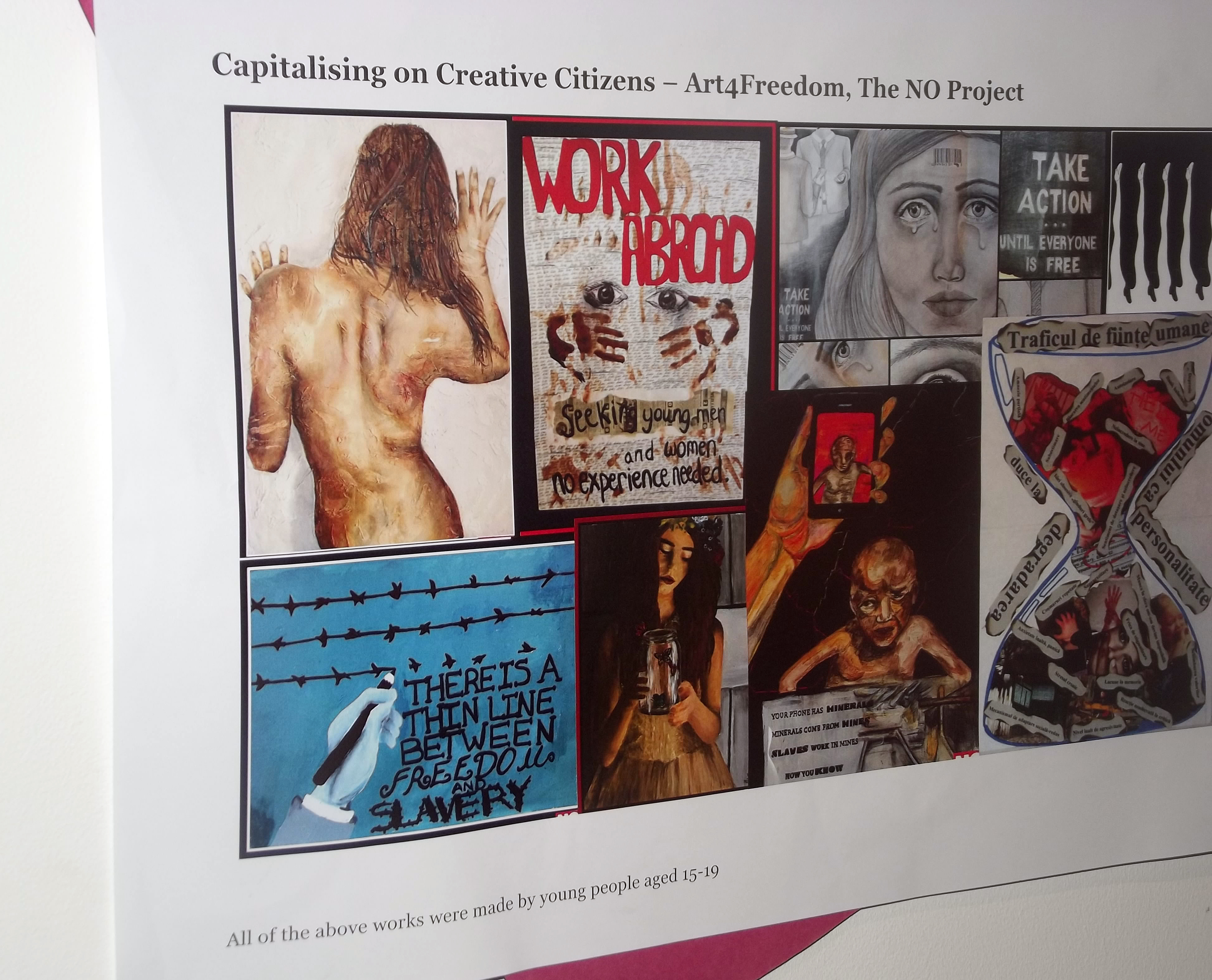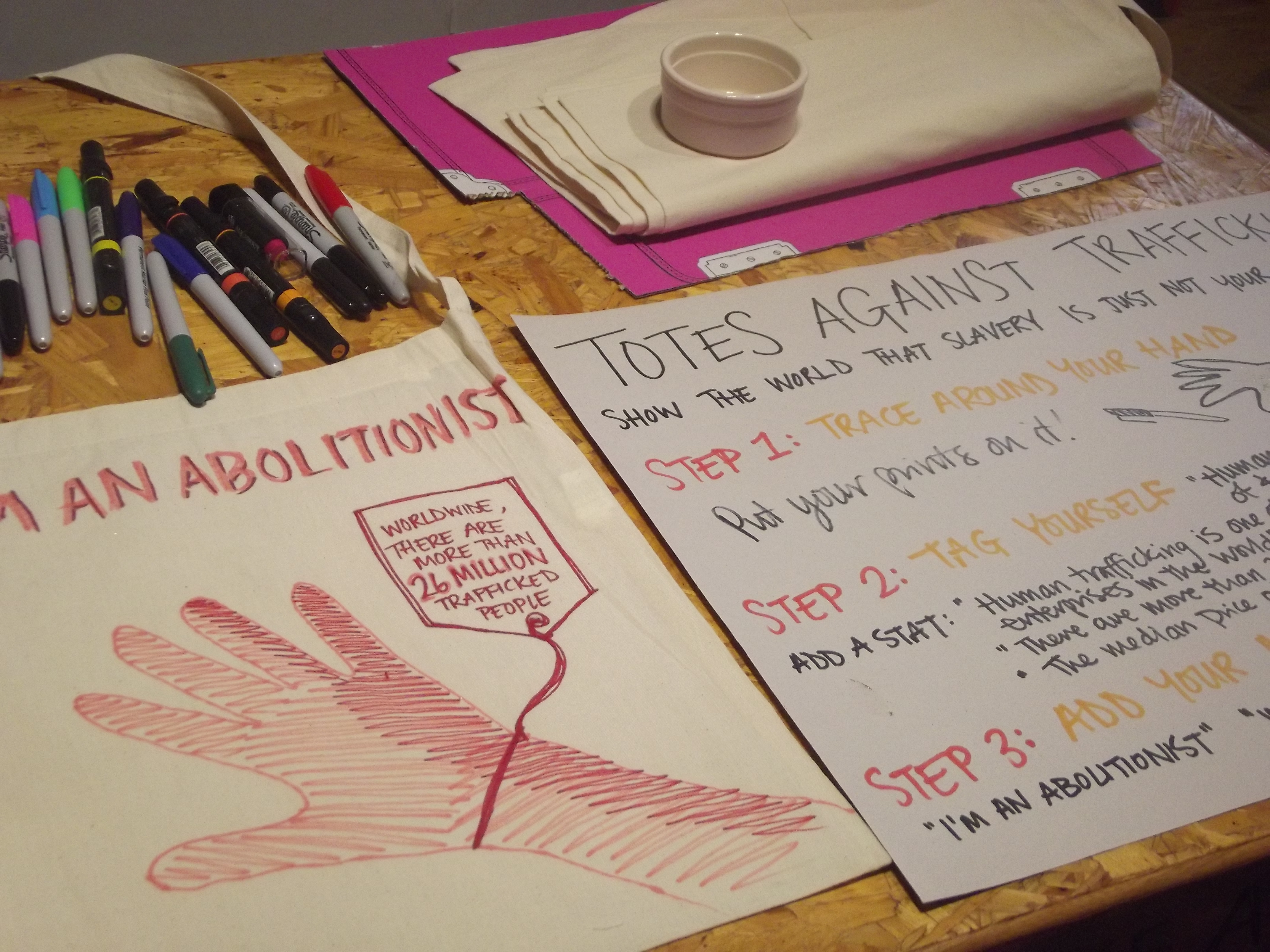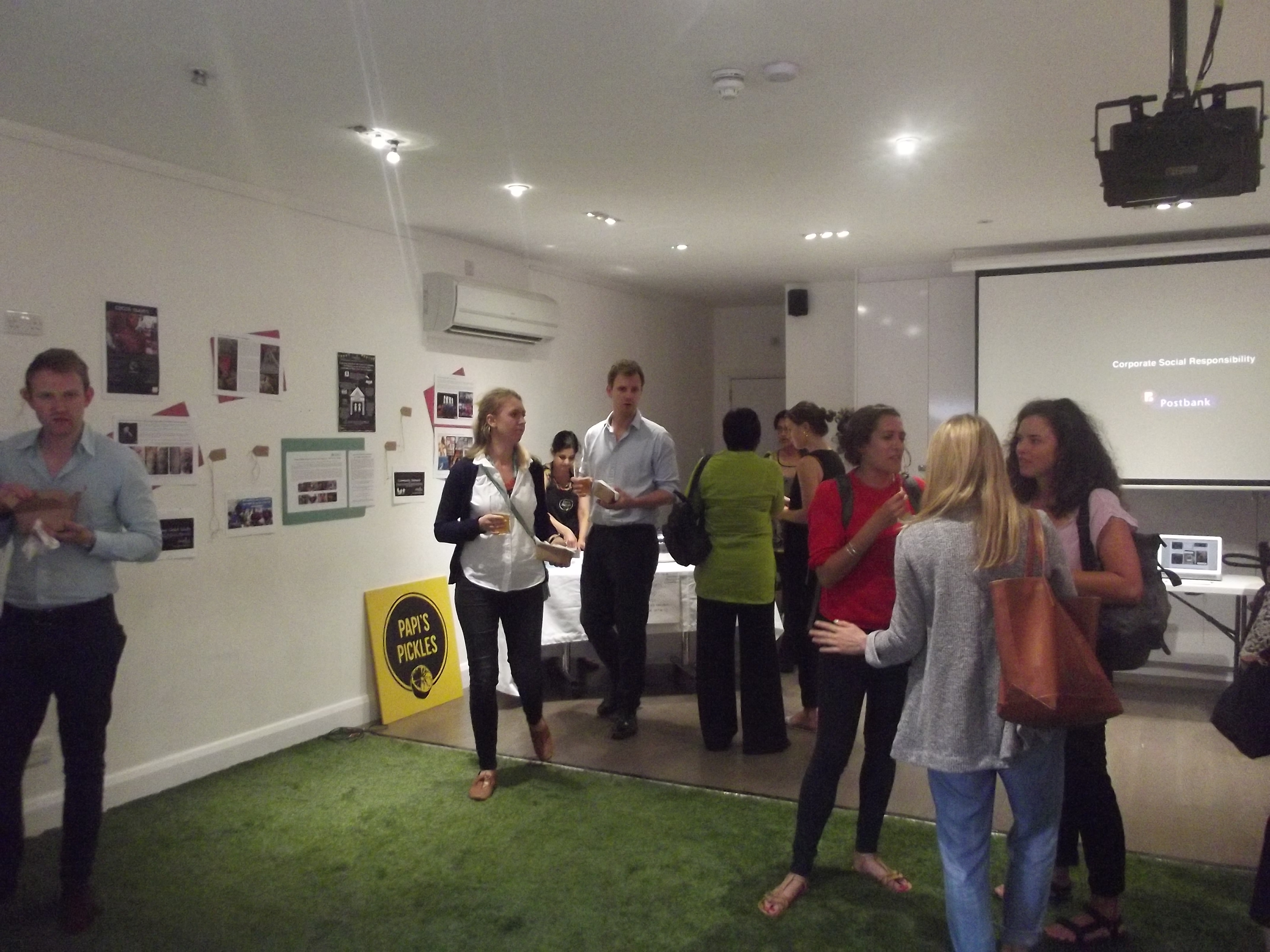“Every child should be taught, not trafficked.”
These were the words of Childreach International’s London Action Group as they delivered a powerful message, addressing a daunting reality conveniently ignored.
Human trafficking is an everyday experience for some, with approximately 21 million victims globally. The vast majority of trafficking happens in northern Asia, particularly in India and Nepal.

Artwork on display at Childreach International’s London Action Group exhibition. [Image credit: Kayode Ajibade]
In August 2016, Childreach International‘s London Action Group hosted an interactive exhibition exploring the arts as a means to combat human trafficking.
A spokesperson from the Dalit Freedom Network (DFN), one of the charities invited, spoke about the impact of trafficking in India specifically. The DFN consider trafficking, an unaddressed epidemic in India, where a caste system leaves Dalit women and children up to 27 times more likely to be trafficked.
The event itself provided the perfect opportunity to raise awareness about an issue which is all too real, although casually dismissed. Organised by Marian Shivji, Chair of the London Action Group, the aim of the evening was to educate individuals about human trafficking through artistic expression.The artwork on display evoked an emotional response from those in attendance, which was no doubt the intention. Images on display drawn by victims of trafficking, mostly women and children, told stories of false hope and deception.
One drawing by a child survivor at a nursery age, depicted in detail what would happen to them on a daily basis. The child-like quality made the piece itself that much more personal and impactful. Another piece depicted a “sex room” where victims would live, treated essentially like livestock for the pleasure of customers.
There is no doubt that these pieces of artwork powerfully achieved their aim of bringing the horrors of human trafficking home.

Posters created at Childreach International’s London Action Group exhibition. [Image credit: Kayode Ajibade]
Marian, a biochemistry graduate from St Andrews University as well as the organiser of the event, discussed her motivation to campaign against human trafficking. Having been on expedition to Mount Everest in 2012 for a Childreach fundraiser, she met local Nepalese residents and formed personal friendships with them. Whilst there she witnessed the standard of life and saw first-hand the impact the threat human trafficking has had.
Marian went on to discuss how last year’s earthquake had displaced Nepalese residents, many of them becoming victims of this epidemic.
To round up the evening, Tiffany Watts. Executive Director of Childreach International, took to the floor to explain the charity’s plans and current campaign “taught not trafficked”. She spoke of the charity’s work in Nepal building schools and educating children. Tiffany discussed the harsh realities surrounding premature dropouts in education.
Tiffany went on to discuss why and how trafficking occurs, the main reason being a lack of economically viable options as well as the result of being kidnapped or even being sold by a relative whilst being promised the chance of a better life.
In conclusion, ‘Liberation: Art’s response to trafficking’ powerfully achieved its aim. This grassroots gathering delivered a strong message in a creative way.
Human trafficking is more widespread than often thought. We are all touched by it; a daunting reality conveniently ignored.
To find out more about Childreach International’s work, visit their website, like them on Facebook and follow them on Twitter.


